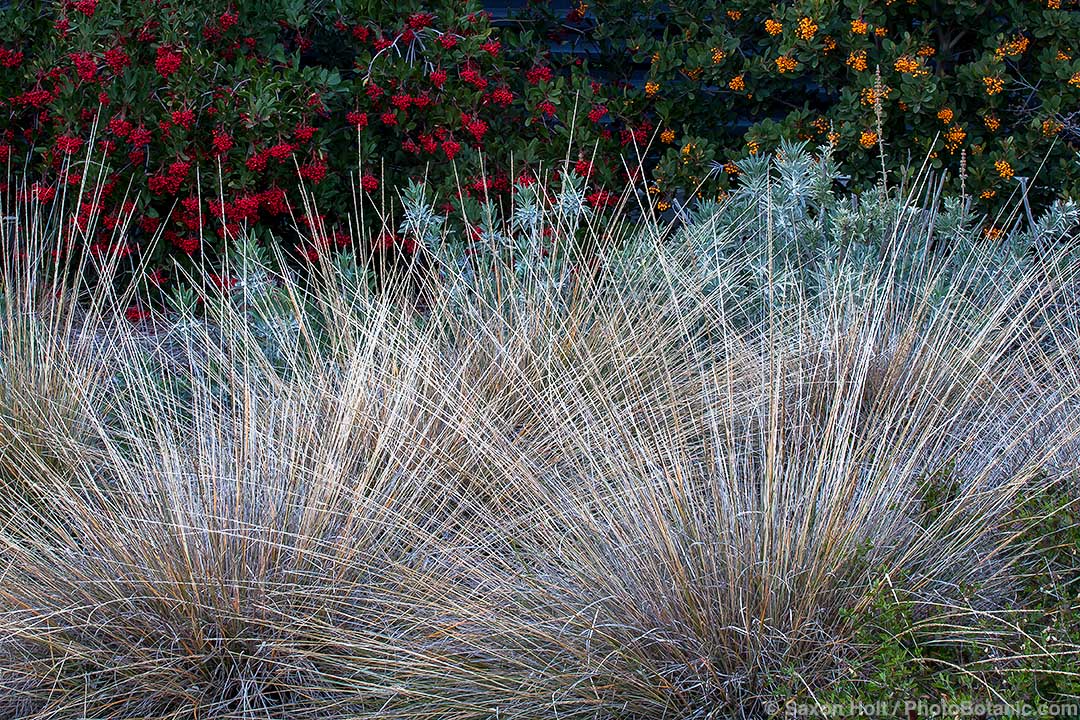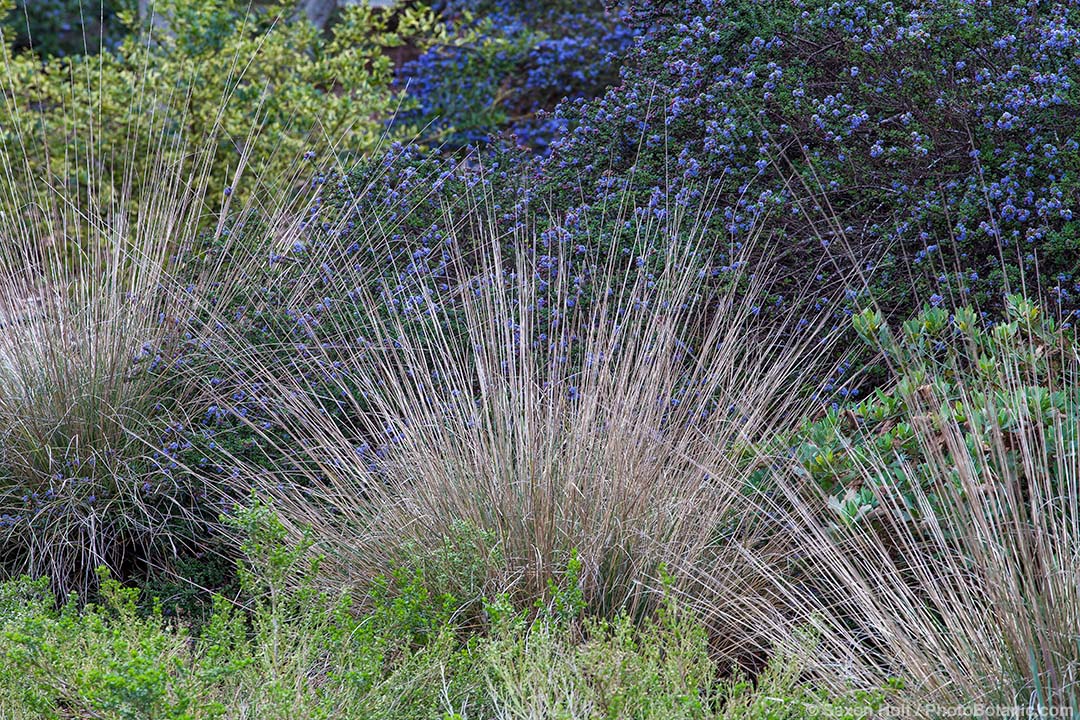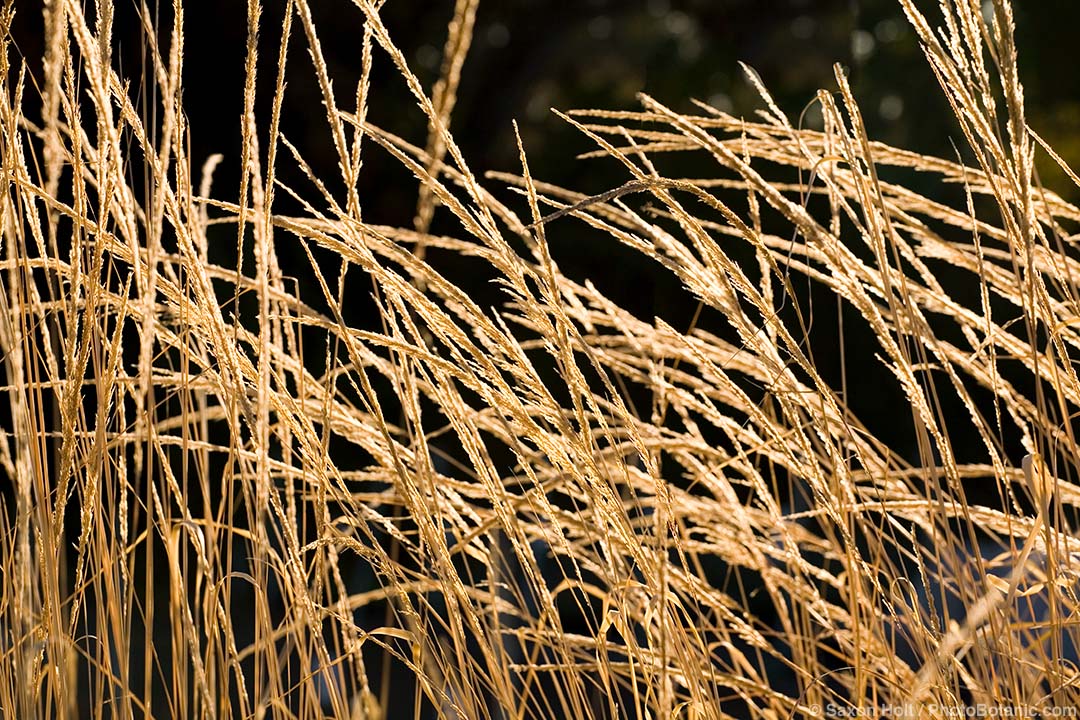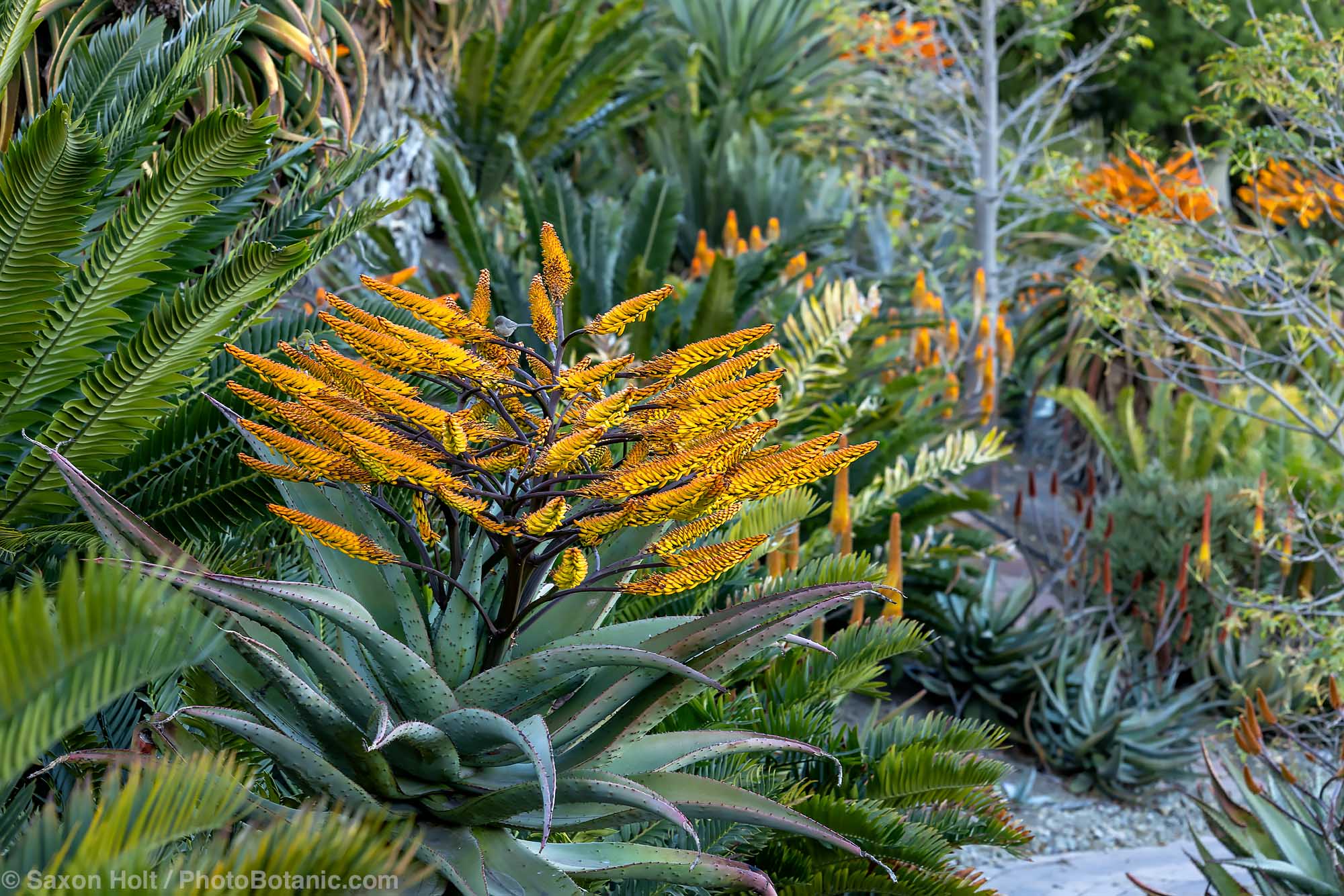Muhlenbergia Grasses

Share This!
Muhlenbergia are wonderfully ornamental bunch grasses, widely adapted to almost all summer-dry climates. Yes, we are biased, but no garden should be without at least one Muhly grass. As a warm season grass, flowering in late summer, they are particularly useful as focal points and drama for the autumn and winter garden.

Muhlenbergia rigens Deer Grass, California native bunch grass with Ceanothus, at Native Sons Nursery
The largest Muhlenbergia, M. rigens, is commonly known as deer grass, not because deer like to eat it, rather the big mounds draw deer to sleep on them. Indeed, like many bunch grasses, deer do not like to browse Muhlenbergia because they don’t want to put their noses into prickly foliage. This California native can be a stand alone living sculpture and doesn’t not need to be cut back every year.
About half the size, and perhaps more useful to small gardens, M. dubia, Pine Muhly looks great when planted in groups or scattered through a meadow garden.

Muhlenbergia dubia, Pine Muhly bunch grass with Toyon berries; UC Davis Arboretum
Let the drying flower spikes persist after flowering as a design statement in the winter garden as well as winter habitat for beneficial insects. Cut back in late winter as new foliage begins to shoot out. They don’t really begin to grow back until it gets really warm.
The long, graceful culms of Muhlenbergia are a dramatic garden feature when the grass is placed where it can stand apart and catch the light. This is especially noticeable in winter when the sun is low and other herbaceous plants are cut back.

Muhlenbergia lindheimeri backlit flower culms in California summer-dry autumn garden
Try photographing them in back light with a darker part of the garden in soft focus well behind. In this way they can harvest the light and make a cold winter day seem bright and sunny.
Movement is another wonderful feature that bunch grasses bring to gardens, swaying with the breeze. This next Muhlenbergia, M. capillaris has lighter, more cloudlike masses of flowers and is know as hairy awn Muhly or pink Muhly as this next photo so clearly illustrates.

Muhlenbergia capillaris, Pink muhly flowering lawn substitute in Southern California front yard
Unlike the other Muhly grasses, pink Muhly is not native to dry climates but rather the southeast U.S. While it will appreciate monthly water in hot summers it is well adapted to summer-dry gardens. And as the photo so readily shows, it’s an eye catching lawn substitute. The pink flowers come on in autumn and eventually fade to tawny cream.
Want to see more grasses ? Grass and Grasslike plants are one of our 12 Plant Types in our photo library found in the site navigation toolbar.
Share This!
3 Comments
Leave A Comment
Related Articles
By: Saxon Holt
By: Nora Harlow






Mullinberia Dubia has become very invasive in our pastures. Cattle will avoid it as much as possible. The grass is very tough and cattle can’t bite it off. It reseeds and out competes livestock grasses.
Be careful not to introduce grasses not native to the area. Or domestic pastures, it’s hard enough to deal with the high cost and low return with livestock.
I enjoy native plants and have studied them for years. Also I raise beef cattle and understand the difficulties of maintaining a productive pasture.
M.dubia comes from elevations of 3,300-5,000 feet in the Chihuahuan desert from eastern Arizona, New Mexico, South Texas and northern Mexico and is a wonderful addition to many gardens in California. I can’t tell where you are located within our summer-dry climate audience but grasses can be notorious for being invasive, however “productive pasture for livestock” is not a criteria we normally consider. Nassella tenuissima is another grass native to deserts of Mexico that can be invasive, and as in your concern about M. dubia, some of its biggest critics come from Australian cattle folk.
And yes you are very correct about introducing grasses that are competing with native grass. Farming tough enough without fighting pretty grasses that eventually take over. Been there
Drj